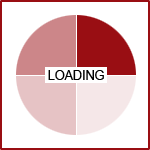XRF Lead Testing: Why It’s the Gold Standard for NYC Compliance
If you're a landlord or contractor managing buildings built before 1960, Local Law 31 has one clear message: get your lead paint inspections done — and done right. That’s where XRF technology comes in. In this post, UNYSE breaks down why XRF lead testing is the gold standard for compliance in NYC — and how it can save you time, money, and serious headaches in 2025.
What Is XRF Lead Testing, Exactly?
XRF stands for X-ray fluorescence, a cutting-edge method that detects lead in painted surfaces without damaging the wall or trim.
How it works:
A handheld XRF analyzer shoots low-energy X-rays at a painted surface. If lead is present, the paint gives off a signature fluorescent “glow” that the device picks up — identifying exactly how much lead is in the paint layer.
No scraping. No sampling. No waiting on lab results.
Why NYC Requires XRF for Local Law 31
The city isn’t suggesting XRF — it’s requiring it. Under Local Law 31, all lead-based paint inspections in pre-1960 NYC buildings must be done using XRF technology. It’s the only legally accepted method for full-unit testing.
Here’s why:
-
Accurate to the milligram — no more guessing
-
Instant results — reports available same day
-
Non-destructive — no peeling paint or damaged surfaces
-
EPA & HUD compliant
For a city like New York, where time is tight and compliance is king, XRF is the no-brainer solution.
When Do You Need XRF Testing?
You’ll need a full XRF lead inspection if:
-
Your building was built before 1960 (or 1960–1978 w/ known lead paint)
-
You own rental property in NYC
-
Your units house children under 6
-
You’re planning renovations or tenant turnover
-
You want to meet Local Law 31 before the August 2025 deadline
The law says every unit must be tested — not just one or two samples. UNYSE performs comprehensive, apartment-by-apartment XRF scans.
What Does a Full XRF Inspection Include?
When you work with UNYSE, here’s what your inspection will include:
-
Room-by-room scanning of painted surfaces
-
Testing of windows, doors, baseboards, trim, radiators & walls
-
Identification of positive and negative lead readings
-
Professional report for Local Law 31 documentation
-
Support in filing with HPD or DOH if needed
Our inspectors are EPA-certified, HUD-compliant, and have years of experience navigating NYC regulations.
Why You Shouldn’t Wait Until the Deadline
August 2025 might seem far off — but when it comes to city compliance, procrastination is a trap.
Here’s why early testing is the smart move:
-
Avoid scheduling delays when demand spikes next year
-
Correct lead hazards before a violation is issued
-
Stay compliant ahead of tenant turnover or new leases
-
Prevent lawsuits and rent strikes from non-compliant units
UNYSE is already seeing a major uptick in bookings — especially in outer boroughs and affordable housing complexes.
Common Myths About XRF — Busted
“It’s too expensive.”
Not when you consider the alternative — violations, repairs, and lawsuits. XRF is cost-effective for full-building compliance.
“I don’t need it if I did lead abatement years ago.”
Wrong. You still need to prove the work was done using XRF results and documented reports.
“I can test one unit and apply the results to all.”
Nope. NYC requires every dwelling unit to be tested — not just a sample.
UNYSE Makes Compliance Easy
We don’t just show up with a scanner and bounce — we provide full-service lead testing and documentation, including:
-
Certified XRF inspections
-
Digital reporting for your files and tenants
-
Guidance on remediation (if needed)
-
Post-remediation clearance testing
-
Long-term compliance tracking
Whether you manage 3 units or 300, we’ve got you covered.
Why NYC Property Owners Trust UNYSE
We’ve been testing lead paint in New York since 1994 — long before Local Law 31 was a thing. Our team is known for:
-
Deep knowledge of NYC lead law
-
Professional, certified field staff
-
Crystal-clear reports that stand up to inspection
-
Responsive service and flexible scheduling
-
No conflicts — we don’t do abatement, only testing
That means you get independent, trustworthy results — every single time.
Final Take: Get Compliant, Stay Protected
2025 is a tipping point for NYC lead law compliance. XRF testing isn’t optional — it’s required, and delays could cost you tens of thousands in violations or lost rent.
UNYSE is here to help you:
-
Stay compliant with Local Law 31
-
Pass inspections and avoid HPD violations
-
Build trust with tenants and agencies
-
Protect your buildings and your business
Don’t wait until the deadline — book your XRF inspection today.
FAQs
Q: How long does an XRF inspection take?
Most units can be inspected in 30–60 minutes. Full buildings vary based on size.
Q: Do I need XRF if I already did lead abatement?
Yes. You still need to document the results with current inspection reports.
Q: Is UNYSE certified to perform XRF inspections?
Absolutely. All our technicians are EPA-certified, and we use approved XRF analyzers.
Q: What if lead is found — will UNYSE handle the removal?
No. UNYSE provides testing and clearance exams only — no abatement, no conflict of interest.

